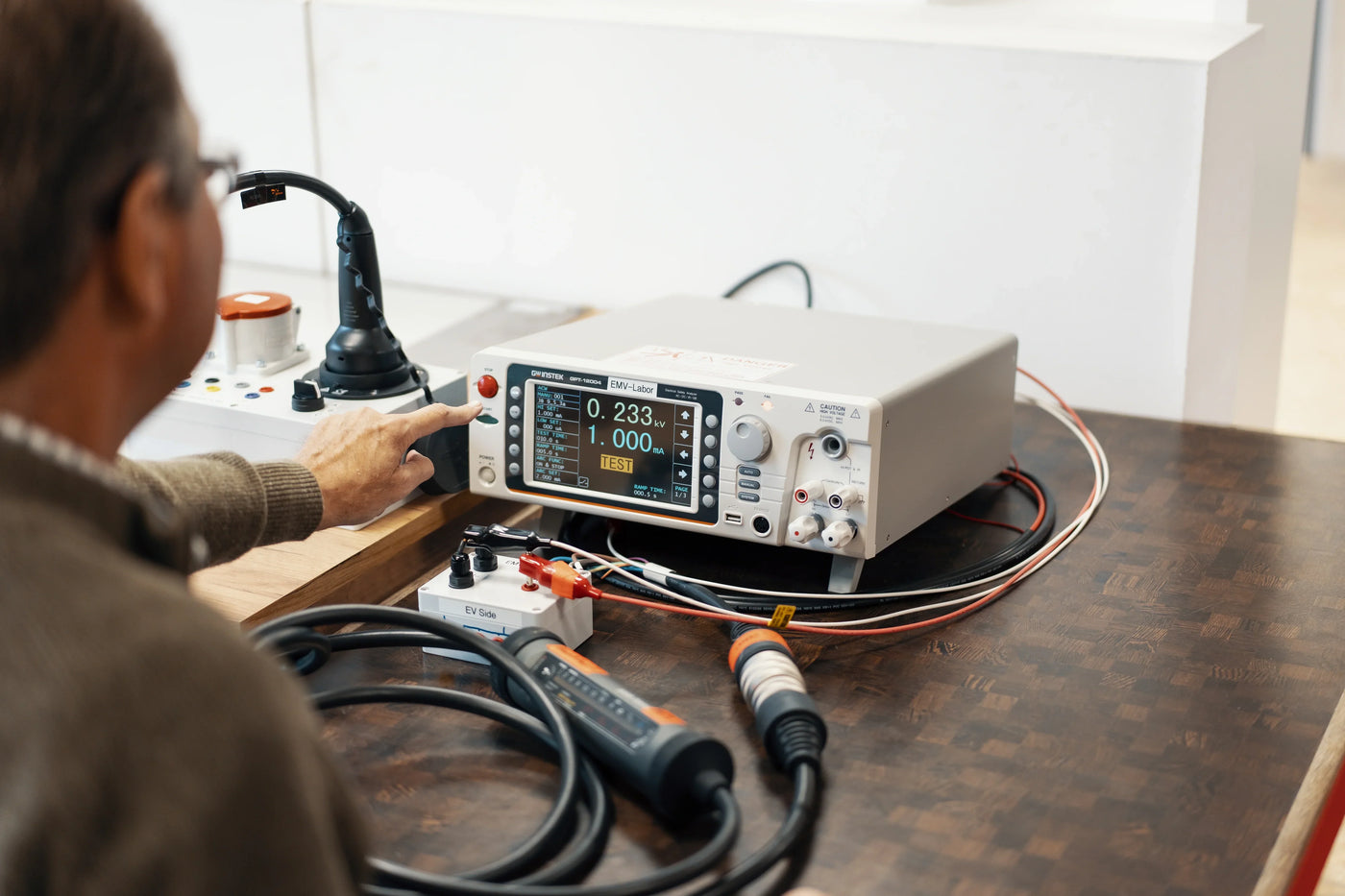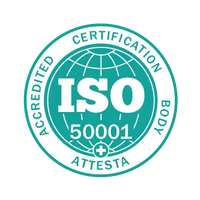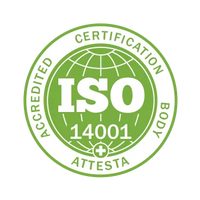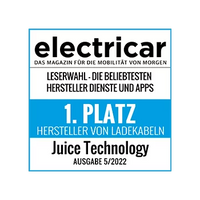How different testing procedures lead to different results
Consumers looking to purchase a wallbox often rely on test reports for their advice. The promises sound good: objective testing, comprehensible evaluation, clear recommendations. But the reality is more complex. Because not all tests are created equal. Sometimes one wallbox takes first place, sometimes another. Why does that happen? And what does a test result actually say?
Different tests, different results
Juice charging stations regularly achieve top rankings in renowned, independent tests such as those conducted by the German Automobile Club (ADAC). While some magazines conduct their own "tests," they still perform well, they are not necessarily test winners. This creates a contradictory picture for consumers. This is because not all tests are created equal – neither in terms of the test criteria, nor in terms of the evaluation or the independence of the testers.
Comparison is not the same as test
A test report in a magazine is not automatically a genuine product review. Often, it is simply a comparison of data—that is, a juxtaposition of manufacturer specifications. This information is not always verified, but simply placed side by side. If information is missing for a criterion, it is sometimes even considered "not met." This becomes particularly problematic when no real stress tests are conducted, yet ratings are still issued.
The problem of test criteria and their weighting
Which criteria are tested, how they are weighted, and how they are interpreted have a massive impact on the results. For example, is more emphasis placed on user-friendliness or app functionality than on charging performance or security features? And how transparent is the weighting?
A clear example:
The criterion “operating temperature”
Juice specifically specifies the maximum temperature at which the wallbox can operate continuously at full power. Other manufacturers only specify the temperature at which the device can still charge – regardless of the actual power. This could mean that a station will charge at 40 degrees Celsius, but only at half power or only for a short time. Comparing such information uncritically produces misleading results that give users a completely false impression of the products.When tests don’t test what really matters
Some publications don't disclose how they conducted their tests. The methodology remains unclear. Furthermore, it cannot be ruled out in every case that editorial decisions were made completely independently of commercial interests or corporate relationships. A lack of expertise can also play a role: Not every editor is familiar with electrical engineering details. The result is faulty test designs and misinterpretations.
Sometimes, the test design can – consciously or unconsciously – contain criteria that only a specific product meets. These are not always practical, but they influence the evaluation results and can create the impression that a product is superior, even though it offers little practical added value in everyday use. Such specifications can significantly influence the test results – often to the detriment of other, technically superior solutions.
Scientifically sound tests are rare – but all the more valuable
Real product tests, such as those conducted by the ADAC (German Automobile Club) or institutions like TÜV (German Technical Inspection Agency), are based on clearly defined, reproducible test procedures. Tests are conducted both in the laboratory and in the field, under controlled conditions, and with a high level of transparency. This makes the results reliable and traceable. Juice has been named test winner in such tests several times. This is particularly valuable to us because it not only confirms the quality of our products but also provides concrete suggestions for how we can further improve them.
Conclusion: It’s worth taking a closer look
Not every "test" deserves the name. Anyone looking for a reliable charging station should not just pay attention to the rating or ranking, but also question how the results were arrived at. Only when test criteria are transparent, understandable, and realistic will the results be meaningful. Therefore, we welcome transparent and independent testing procedures that are based on actual everyday suitability. Only under such conditions can quality be measured that also impresses under real-world conditions.
Read more here
- What a test victory really means – and why the JUICE BOOSTER 2 was at the top of the ADAC test:
JUICE BOOSTER 2 is ADAC test winner | Juice Technology AG - Our community voted – and the results speak for themselves: The best charging cable comes from Juice! Find all the details about the award in this post:
10,000 fans have decided: The best charging cable comes from Juice! | Juice Technology AG - Safety that is tested: The JUICE BOOSTER 2 is the first mobile 22 kW charging station with the TÜV SÜD seal according to the current standard:
JUICE BOOSTER 2 – first mobile 22 kW charging station with TÜV SÜD certification according to current standards | Juice Technology AG - Quality that convinces: Find out here why the JUICE BOOSTER 3 air was the ADAC test winner:
JUICE BOOSTER 3 air ADAC test winner - An independent perspective: The ADAC (German Automobile Club) has put mobile charging stations through their paces. Click here for the full test report:
https://www.adac.de/rund-ums-fahrzeug/elektromobilitaet/laden/mobile-wallboxen-test/













